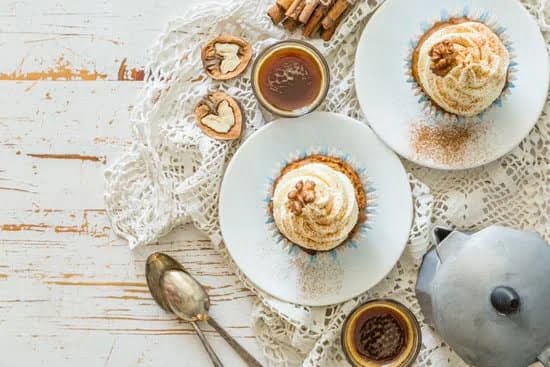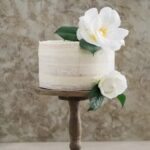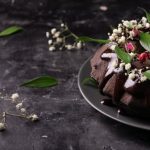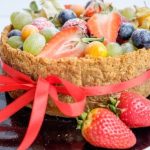Are you looking to take your cake decorating skills to the next level? Choosing the best frosting for decorating cakes is crucial to achieving professional-looking, beautiful designs. Whether you’re aiming for smooth, piped, vibrant, or textured decorations, selecting the right frosting can make all the difference in the final presentation of your cake.
In this article, we’ll explore the various types of frostings available and provide insight into which ones work best for specific decoration techniques. Whether you’re a novice baker or an experienced cake decorator, understanding the best frosting options will help elevate your creations to new heights.
When it comes to decorating cakes, choosing the right frosting is essential. With several options available such as buttercream, fondant, royal icing, and cream cheese frosting among others, knowing which one suits your needs can be overwhelming. In this article, we’ll delve into the characteristics of each type of frosting and guide you on selecting the best option based on your desired finish.
Unsure about which frosting works best for creating a smooth surface on your cake? Looking for a frosting that holds its shape when piped onto intricate designs? Wanting to achieve bold and vibrant colors with your decorations?
Throughout this article’s sections, we’ll address these questions and more in detail. With tips and tricks for working with different types of frosting as well as guidance on choosing the perfect one for your next cake project, you’ll be equipped with the knowledge to create stunning cake decorations that are sure to impress.
Types of Frosting
When it comes to decorating a cake, choosing the right frosting is crucial to achieving the desired look and texture. There are various types of frosting that can be used, each with its own unique qualities and suitability for different decorating techniques. Some of the most popular types of frosting include buttercream, fondant, royal icing, and cream cheese frosting, among others.
Buttercream frosting is one of the most versatile options for cake decorating. It is smooth and creamy, making it suitable for creating a smooth surface on the cake. It also holds its shape well, making it perfect for piping intricate designs and borders.
Fondant, on the other hand, is a thicker type of frosting that can be rolled out and draped over a cake to create a flawless finish. It is ideal for achieving vibrant colors and can be molded into various shapes to create elaborate decorations.
Royal icing is another popular choice for decorating cakes, particularly when intricate designs or delicate details are required. It dries hard, making it perfect for creating 3D decorations such as flowers or lace patterns. Cream cheese frosting has a rich and tangy flavor that pairs well with certain cake flavors, and it is often used for adding texture and dimension to cake decorations.
Each type of frosting has its own set of benefits and drawbacks when it comes to decorating cakes. Understanding the characteristics of each type can help bakers and decorators choose the best frosting for their specific project based on factors such as desired texture, color vibrancy, and ease of use for different decorative techniques. Ultimately, the best frosting for decorating a cake will depend on the specific requirements of the design and the preferences of the baker or decorator.
Best Frosting for Smooth Surfaces
When it comes to decorating cakes, choosing the right frosting is crucial for achieving a smooth, professional-looking finish. The best frosting for creating smooth surfaces is buttercream. Buttercream frosting is versatile and easy to work with, making it the go-to choice for many cake decorators. Its creamy texture allows for easy spreading and smoothing, resulting in a flawless surface that serves as the perfect canvas for further decorations.
Buttercream frosting is made from butter, powdered sugar, and flavorings such as vanilla or chocolate. It can be easily tinted with food coloring to achieve any desired hue, making it ideal for creating a variety of decorative elements on a cake. Additionally, buttercream holds up well in different temperatures, making it suitable for both indoor and outdoor events.
For those who prefer a more elegant and polished look, fondant is another popular option for achieving smooth surfaces. Fondant is a pliable icing that can be rolled out and draped over cakes to create a sleek and seamless appearance. While fondant may not be as flavorful as buttercream, its ability to provide a flawless finish makes it a favorite among professional bakers and decorators.
When working with buttercream or fondant to achieve smooth surfaces on cakes, it’s essential to ensure that the cake layers are level and properly crumb coated before applying the final layer of frosting. This will help create a smooth base for the frosting and prevent any unevenness or lumps in the finished result.
| Frosting Type | Best Use |
|---|---|
| Buttercream | Creating smooth surfaces and easy spreading |
| Fondant | Creating elegant and polished finishes |
Best Frosting for Piping
When it comes to decorating a cake with intricate piping designs, the type of frosting you choose plays a crucial role in the success of your creation. The best frosting for piping is one that can hold its shape and maintain intricate designs without melting or losing form.
While some frostings may be perfect for creating smooth finishes, they may not necessarily be suitable for piping delicate details. When it comes to intricate piping, certain types of frosting stand out as the top choices.
Buttercream Frosting
Buttercream frosting is often praised as the best option for piping intricate designs on cakes. Its smooth and creamy texture, combined with its ability to hold its shape, makes it ideal for creating detailed decorations. Buttercream can also easily be colored with gel food coloring, allowing for vibrant and bold piping designs. Whether you’re creating floral patterns or intricate lace-like details, buttercream frosting is a reliable choice for achieving professional-looking results.
Royal Icing
Another popular choice for intricate piping designs is royal icing. This type of frosting dries hard and holds its shape exceptionally well, making it perfect for creating delicate decorations such as lacework, filigree patterns, and fine details. Royal icing can also be used to create 3D decorations that stand upright on top of the cake, adding a unique touch to your design.
Cream Cheese Frosting
While cream cheese frosting may not be as stiff as buttercream or royal icing, it can still be used for piping simple yet elegant designs on cakes. Its creamy texture allows for smooth piping while adding a rich and tangy flavor to the cake. Cream cheese frosting is an excellent choice for adding piped borders or simple decorative elements that complement the overall design.
Overall, choosing the best frosting for piping ultimately depends on the specific design you aim to achieve and your personal preference in terms of flavor and texture. Experimenting with different types of frosting will allow you to discover which works best for your unique cake decorating style and preferences.
Best Frosting for Vibrant Colors
When it comes to decorating cakes, vibrant colors can make all the difference in creating visually stunning and eye-catching designs. Choosing the right frosting that allows for bold and vibrant colors is crucial in achieving the desired look for your cake. Here are some of the best frosting options for achieving vibrant colors for decorating:
- Buttercream Frosting: Buttercream is one of the most popular choices for decorating cakes, and it also works well for achieving vibrant colors. Using gel food coloring with buttercream allows for intense and bold hues, making it ideal for creating colorful decorations.
- Fondant: Fondant is another great option for creating vibrant colors on cakes. It provides a smooth and seamless surface, which makes it perfect for intricate designs and bright colors. Fondant can easily be tinted with gel or powdered food coloring to achieve vibrant shades.
- Royal Icing: Royal icing is known for its ability to dry hard, making it excellent for intricate piping work and detailed decorations. It can also be colored with gel food coloring to achieve vibrant hues that will stay vivid once dried.
When working with these frostings, it’s essential to use high-quality gel food coloring to achieve the best results. Gel food coloring is more concentrated than liquid food coloring, resulting in more vibrant colors without altering the consistency of the frosting.
In addition to choosing the right type of frosting, proper color mixing techniques are crucial for achieving bold and vibrant colors. Gradually adding small amounts of food coloring and thoroughly mixing until you reach the desired shade will help prevent any color mishaps and ensure a beautiful finish. With the right frosting and color mixing techniques, you’ll be able to create stunning cakes with bold and vibrant colors that are sure to impress.
Best Frosting for Texture
When it comes to adding texture and dimension to cake decorations, not all frostings are created equal. Some frostings lend themselves better to creating interesting textures and layers, allowing for a more visually appealing and dynamic cake design. Here are some of the best frosting options for adding texture and dimension to your cake decorations:
- Buttercream: Buttercream frosting is versatile and can be used to create a variety of textures, including ruffles, swirls, and peaks. Its creamy consistency allows for easy manipulation and shaping, making it an ideal choice for adding dimension to cake decorations.
- Cream cheese frosting: With its slightly tangy flavor and smooth texture, cream cheese frosting is perfect for creating soft and fluffy textures on cakes. It is also great for achieving a rustic or natural look when used to create textured finishes or piped designs.
- Fondant: Fondant is a popular choice for creating intricate textures on cakes. It can be molded, embossed, or ruffled to add depth and dimension to cake decorations. Fondant is particularly well-suited for sculpting realistic details such as flowers, ribbons, or lace patterns.
For decorators looking to achieve a textured look on their cakes, these frostings offer the best options for creating visually stunning designs that go beyond the smooth surfaces typically associated with traditional cake decorating.
In addition to choosing the right type of frosting, it’s essential to have the right tools on hand when working with textured frostings. Piping bags with various tips, offset spatulas, sculpting tools, and impression mats can all help in achieving different textures and effects. Experimenting with different techniques and practicing on small projects can also help decorators perfect their skills in using different types of frostings to add texture and dimension to their cake decorations.
Tips for Working With Different Types of Frosting
Working with different types of frosting can be a fun and creative process, but it’s important to understand the unique characteristics of each type in order to achieve the best results. Whether you’re working with buttercream, fondant, royal icing, or cream cheese frosting, here are some tips and tricks for mastering the art of cake decorating.
Buttercream Frosting
Buttercream is one of the most popular frostings for decorating cakes due to its creamy texture and versatility. To achieve a smooth finish with buttercream, it’s important to first apply a crumb coat and allow it to set before adding a final layer.
This will help create a flawless base for your decorations. Additionally, if you’re piping intricate designs with buttercream, make sure the consistency is just right – not too stiff and not too runny – in order to achieve clean lines and shapes.
Fondant
Fondant is known for its ability to create clean, sleek surfaces on cakes. When working with fondant, make sure to knead it well before rolling it out to prevent any air bubbles from forming. Use powdered sugar or cornstarch to prevent sticking when rolling out fondant. For detailed decorations such as flowers or figurines, mix Tylose powder into your fondant to give it more structure and prevent sagging or drooping.
Royal Icing
Royal icing is ideal for creating intricate and delicate designs on cakes and cookies. When working with royal icing, consistency is key. For flooding large areas or creating fine details, adjust the consistency by adding small amounts of water until you reach your desired thickness. To prevent royal icing from drying out while decorating, cover bowls of unused icing with plastic wrap or a damp cloth.
By understanding these techniques for working with different types of frosting, you’ll be better equipped to choose the best frosting for decorating your next cake project based on your desired finish and design requirements.
Conclusion
In conclusion, choosing the right frosting is crucial for achieving the desired look and style when decorating a cake. Each type of frosting has its own unique qualities, making it suitable for different decorating purposes.
After exploring the various types of frosting, it is clear that there is no one-size-fits-all option for every cake decorating project. The best frosting for decorating a cake ultimately depends on the specific design, color, texture, and overall look you want to achieve.
For achieving smooth surfaces on cakes, buttercream frosting is often the go-to choice. Its creamy texture allows for easy spreading and creates a polished finish. When it comes to intricate piping designs, royal icing is the best frosting option as it holds its shape well and allows for precise detailing. Meanwhile, fondant is ideal for vibrant colors and adding texture to cake decorations due to its moldable nature and ability to hold color well.
When working with different types of frosting, it’s important to keep in mind certain tips and techniques. For example, adjusting the consistency of buttercream can make it easier to work with when creating smooth surfaces or intricate piping details. Additionally, incorporating gel food coloring rather than liquid can help achieve more vibrant colors without compromising the texture of the frosting.
In summary, understanding the characteristics and best uses of different types of frosting will enable decorators to choose the most suitable option for their specific cake projects. With careful consideration and experimentation with different frostings, everyone can find their perfect match for achieving beautiful and professional-looking cakes.
Frequently Asked Questions
What Type of Frosting Is Best for Cake Decorating?
The best type of frosting for cake decorating largely depends on personal preference and the specific needs of the cake design. Buttercream frosting is a popular choice due to its versatility, but fondant and royal icing are also commonly used for more intricate designs.
What Is the Best Icing to Practice Cake Decorating?
When practicing cake decorating, it’s best to use a simple buttercream icing. This allows for easy manipulation and rework, and is forgiving for beginners. It also provides a good base to practice different decorating techniques such as piping and smoothing.
What Frosting Holds Its Shape Best?
Buttercream frosting is known for holding its shape well, especially when it comes to intricate piping work or creating decorative elements on a cake. Its creamy texture makes it ideal for maintaining sharp edges and intricate designs, making it a favorite choice among professional decorators.

Welcome to our cake decorating blog! My name is Destiny Flores, and I am the proud owner of a cake decorating business named Cake Karma. Our mission is to provide delicious, beautiful cakes for all occasions. We specialize in creating custom cakes that are tailored specifically to each customer’s individual needs and tastes.





